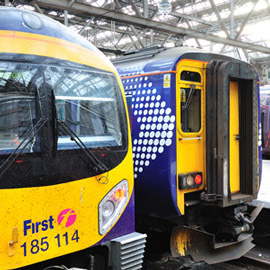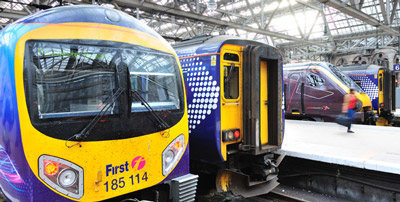Visibility of trains – what’s changing?
Posted: 17 March 2016 | | No comments yet
In an article for Global Railway Review, the Rail Safety and Standards Board (RSSB) discusses recent changes to standards for rail vehicles ensuring trains are sufficiently audible and visible on Britain’s railways…


In an article for Global Railway Review, the Rail Safety and Standards Board (RSSB) discusses recent changes to standards for rail vehicles ensuring trains are sufficiently audible and visible on Britain’s railways…


People need to be able to see and hear trains appropriately so they’re able to stay safe. In Britain, historically train fronts were required to have a yellow panel in order to make them more visible, a move which came in the 1950s when newer diesel and electric trains were found to be far quieter than steam. However since that time, headlamp technology has improved, and the requirements for visibility and audibility of trains are rooted in European legislation.
In light of this, the relevant requirements for rail vehicles in Britain have been updated in a new standard, ‘GM/RT2131 Audibility and Visibility of Trains’.
What is this standard?
This standard provides organisations with a set of requirements on audibility and visibility so that when new or modified rail vehicles are introduced to the GB mainline network, they are compatible with existing infrastructure and other vehicles.
The standard also aids assessment of the appropriateness of a new or modified vehicle’s front end colour which, for vehicles complying with the headlamp requirements in the Technical Specification for Interoperability (TSI), no longer needs to be yellow.
The new Railway Group Standard was published in December 2015 and officially came into force on 5 March 2016, replacing GM/RT2483, issue one, Visibility Requirements for Trains and GM/RT2484, issue two, Audibility Requirements for Trains. GM/RT2131 sets out requirements for front end lamps but no longer includes a requirement for a yellow front end for vehicles complying with the headlamp requirements in the TSI.
For vehicles with headlamps not complying with the TSI, yellow front ends are still required, and the standard contains details about how to achieve this.
Yellow plant still has to be yellow all over, and shunting locomotives and snowploughs still require forward-facing surfaces painted yellow with black diagonal stripes where it’s reasonable to do so.
Organisations introducing or operating trains need to comply with the law and assess the risk associated with visibility of their trains and implement necessary control methods, along with the requirements specified in the standard.
Where a non-yellow front end train is being considered on a route where yellow is currently used, it will be important for organisations to consult all affected parties to make them aware of the change so that they can manage its impact.
In any suitable and sufficient risk assessment, it will be beneficial to consider:
- All operating conditions likely to be experienced by that train
- The impact on the safety of railway workers, passengers and members of the public
- The impact on safety at level crossings
- The effect of front end colour on the perceived position of a stationary train when a driver is undertaking a permissive move into a platform already occupied by another unit
- Reliability and maintenance of the headlamps
- All relevant duties under health and safety legislation.
The organisation introducing the train needs to consider whether the absence of a yellow panel is ‘significant’ under the relevant regulations, and if so, is required by law to apply the Common Safety Method on Risk Evaluation and Assessment to assess the benefits or potential hazards.
The new standard provides guidance on front end colours, particularly if a company decides to exclude the yellow warning panel. There is also advice on taking care to consider the impact of choice of certain colours and designs, for example, avoiding colours associated with signal aspects or with high visibility clothing to avoid confusion.
So what impact does this have for the GB rail industry?
Following these changes, it’s now up to the companies owning and operating trains to make sure they are sufficiently visible. For new and modified trains, this includes having the right arrangement of headlamps in line with legal requirements.
The new standard describes relevant modern requirements and best practice on audibility and visibility, including where yellow warning panels still need to be used on existing trains. The yellow front end is still a must for trains without the new arrangement of headlamps, and the spec for the yellow panel is still provided in the new standard where companies find this to be good practice.
Indeed, while it’s common in mainland Europe to see train fronts of different colours, it may be some time before we see trains without the yellow front in Britain, but the option is now there, as long as the relevant risks are managed.
For further information on this topic and more visit www.rssb.co.uk.








